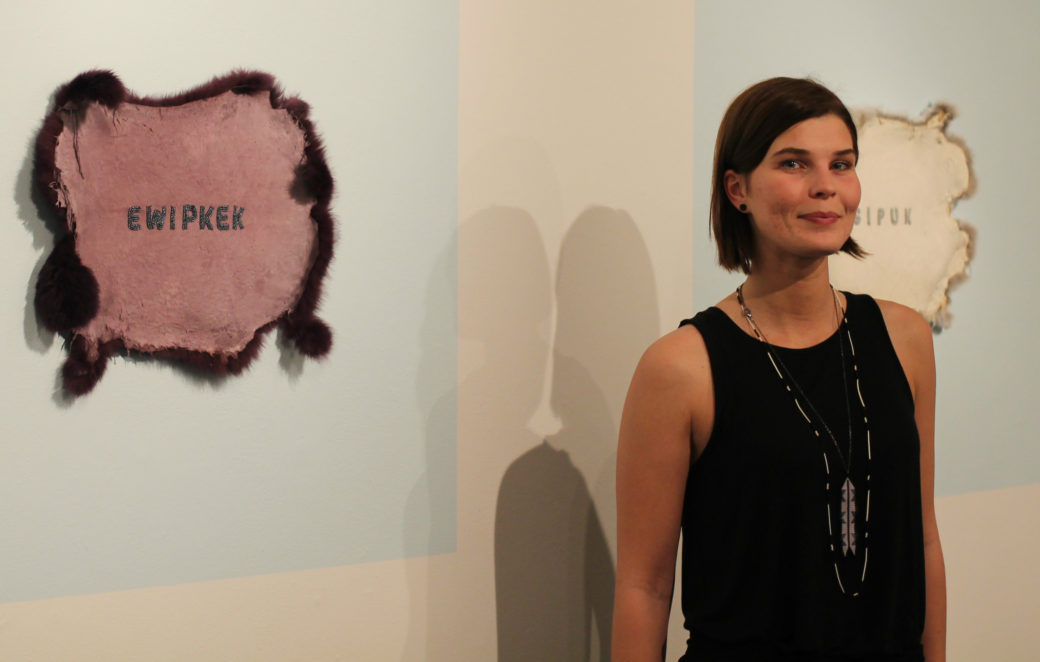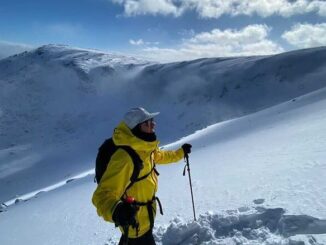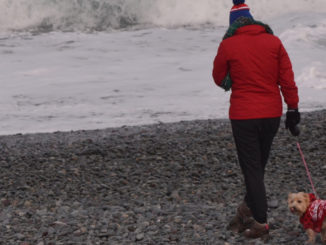Meagan Musseau seamlessly blends traditional Mi’kmaq techniques with modern materials to make art with a message.

Jonny Hodder
Kicker
There is nothing typical or aloof about artist Meagan Musseau.
Musseau doesn’t shy away from making art with intent and purpose.
“This work came from me coming back to being at home, but being at home in a way where I was far more aware of our history,” said Museau. “I was always aware of my lineage, but more the history of our people and the colonial history here in what’s now Newfoundland,” she said during the opening weekend of her latest exhibition, Pejipuk | the winter is coming.
Her art, as she describes it, “sits in this place of craft-based practices” such as the traditional Mi’kmaq woven baskets on display at Eastern Edge Gallery in downtown St. John’s.
Her Indigenous ancestors would have used the resources available to them in their natural surroundings such as thinly split strands of spruce or furs dyed with ochre to create baskets. Musseau used plastics and synthetic dyes.
“I’m sort of displaced from the materials of the land, so I’m continuing the language of making it with contemporary materials,” she said.
For Musseau, who grew up in Curling on the west coast of Newfoundland, her art is both an exploration of her own Mi’kmaq identity and a commentary on what it means to be Indigenous in the modern Canadian context.
While she’s quick to admit she’s “not an in-depth researcher”, she understands the role Indigenous art can play in creating a conversation about land claims or natural resource development — two issues continually at the forefront of Newfoundland and Labrador politics thanks in no small part to the massive $12 billion Muskrat Falls hydroelectric project.
“In thinking about Indigenous’ futures, if our resources are being extracted and there’s potential danger to the natural environment then our natural medicines are in jeopardy,” she said.
“And as a kind of act of resilience and adapting to the materials we do have available, braiding that neon orange flagging tape was a way of saying, ‘even if I can’t access materials, I’m always going to practice those ways of making (things) that help ground me.’”
The reclamation of identity and culture through art resonates with fellow Mi’kmaq artist Jerry Evans, who attended Saturday’s exhibition.
“I can’t speak for Meagan, but looking at her work, I recognize her journey,” Evans said.
“Art is one other voice, one of many mediums that we can express our own voice or the community from which we come, about the situation or our understanding of who we are.”




Be the first to comment